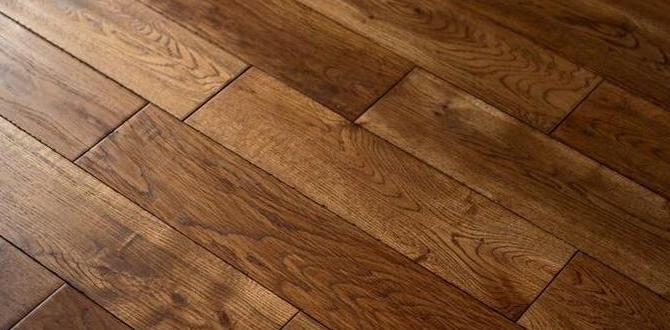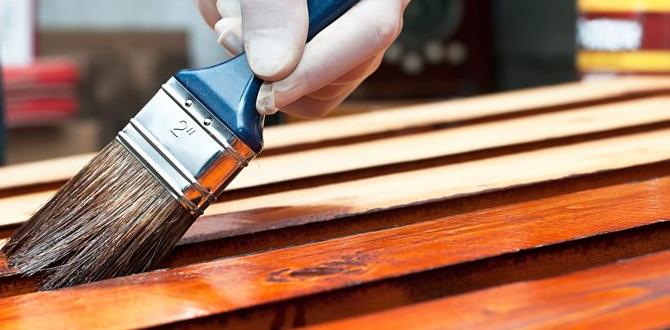Looking for the best heavy-duty nail gun for framing walls? A powerful framing nailer makes building walls a breeze, driving nails quickly and securely. Choose a reliable model that fits your needs for smooth, efficient, and safe framing projects.
Building a wall might sound like a big job, but with the right tool, it can be much simpler than you think! Especially when it comes to attaching the studs and plates together, a nail gun can save you tons of time and effort. Forget about the hassle of hammering each nail one by one. We’re here to guide you through finding the perfect heavy-duty nail gun that will transform your wall-framing projects. Get ready to build with confidence!
<h2>Why a Heavy-Duty Nail Gun is Your Best Friend for Framing</h2>
When you’re framing walls, you’re dealing with tough lumber, often 2x4s or 2x6s. These materials need strong, deep fastenings to ensure your walls are sturdy and safe. Hammering nails into these can be tiring and time-consuming, especially when you have dozens, if not hundreds, of nails to drive.
A heavy-duty framing nailer is designed specifically for this kind of work. It’s built to power through dense wood, driving long nails with speed and consistency. This means:
<p>Speed: Frame walls much faster than with a hammer.
<p>Power: Easily sink nails deep into thick lumber.
<p>Consistency: Every nail is driven to a similar depth.
<p>Reduced Fatigue: Less physical strain on your hands and arms.
This isn’t just about making the job easier; it’s about building better. Strong, well-fastened walls are crucial for the integrity and safety of any structure. A good framing nailer ensures your project is built to last.
<h2>Understanding Framing Nailer Types</h2>
Before we dive into specific models, let’s look at the main types of heavy-duty nail guns used for framing. Each has its pros and cons, and the best one for you depends on your setup and preferences.
<h3>Pneumatic Framing Nailers (Air-Powered)</h3>
These are the workhorses of framing. They are powered by compressed air from an air compressor.
<p>Pros:
Very powerful and reliable.
Lighter weight in hand compared to some other types.
Generally less expensive upfront for the tool itself.
Excellent for high-volume, continuous work.
<p>Cons:
Requires an air compressor, hose, and potentially an air filter/regulator, adding to the initial cost and setup.
The air hose can be cumbersome and limit mobility on a large job site.
Noisy operation (though many new models are quieter).
<h3>Cordless Framing Nailers (Battery-Powered)</h3>
These are becoming increasingly popular, offering a great balance of power and portability. They use a battery to power a motor that drives the nail, sometimes with a small gas cartridge for extra power.
<p>Pros:
Maximum portability – no air hose to wrangle!
Easy to set up and use anywhere.
Many models offer excellent power comparable to pneumatic.
<p>Cons:
Can be heavier in hand due to the battery and motor.
Higher upfront cost, especially when factoring in batteries and chargers.
Battery life can be a limiting factor for very long workdays without spares.
Some models might still require fuel cells, adding an ongoing cost.
<h3>Cordless Framing Nailers (Fuel Cell Powered)</h3>
These also operate without an air hose, but they use a small internal combustion engine powered by a fuel cell (like a propane or butane canister) and a battery for the fan and ignition.
<p>Pros:
Very powerful, often rivaling pneumatic nailers.
Excellent portability.
No need for an air compressor.
<p>Cons:
Ongoing cost of fuel cells.
Can emit fumes, making them less ideal for use in confined indoor spaces without good ventilation.
Some users find the smell of the fuel cells unpleasant.
Can be heavier and bulkier than battery-only models.
<h2>Key Features to Consider When Buying</h2>
Choosing the “best” heavy-duty nail gun for framing walls isn’t a one-size-fits-all decision. Here’s what you should look for to make sure you get a tool that works for you:
<h3>Nail Compatibility</h3>
<p>Nail Size: Framing nailers typically drive nails between 2 inches and 3.5 inches long. Make sure the nailer can handle the length you need for your framing lumber. The diameter (gauge) is also important, with framing nailers using a thicker gauge (e.g., 0.131 inches to 0.162 inches).
<p>Nail Collation: This refers to how the nails are held together in a strip. The most common for framing are:
<strong>Plastic Collated:</strong> Nails held together by plastic. Often drive cleaner and don’t leave much debris behind. Preferred by many professionals.
<strong>Wire Collated:</strong> Nails held together by wire. Can sometimes leave small wire fragments in the wood. Generally cheaper nails.
<strong>Paper Collated:</strong> Nails held together by paper. Can also be a good option, but paper can sometimes become saturated if used in wet conditions.
<p>Nail Angle: The angle of the nail strip (e.g., 21°, 28°, 30°, 34°) determines how the nailer can get into tight corners.
<strong>21° (Plastic Collated):</strong> Very common, good for general framing.
<strong>28° – 30° (Wire or Plastic Collated):</strong> More compact heads, often allow for narrower noses, making them good for getting into tighter spaces.
<strong>34° (Paper Collated):</strong> Paper collation allows for a thinner magazine, enabling the tool to get into very tight spots.
<h3>Depth Adjustment</h3>
<p>You need to be able to control how deep the nail is driven. Too shallow, and the nail won’t hold; too deep, and you might damage the wood or drive the nail too far, weakening the connection. Look for an easy-to-use depth adjustment mechanism, often a dial or lever near the nose of the gun. Many modern nailers have tool-free depth adjustments.
<h3>Firing Mode</h3>
<p>Sequential (Single) Firing: You must press the safety tip against the wood AND pull the trigger to fire each nail. This offers precise control and is safer for working in hazardous areas.
<p>Contact (Bump) Firing: You can hold the trigger down, and each time the safety tip touches the wood, a nail is fired. This is much faster for production work but requires more caution.
<p>Selectable Firing Mode: The best heavy-duty framing nailers will offer both modes, allowing you to switch between them as needed. This is ideal for maximizing both speed and precision.
<h3>Power Source & Performance</h3>
<p>For pneumatic nailers, consider the required air pressure and CFM (Cubic Feet per Minute) to ensure your compressor can keep up. For cordless, check battery voltage (V) and amp-hours (Ah) for power and runtime. Gas-powered models will focus on the power delivered per charge/fuel cell.
<p>Power: Ensure the nailer has enough power to consistently drive nails into the hardest woods you plan to use without “riding” the nail (where it doesn’t fully sink).
<h3>Ergonomics and Weight</h3>
<p>You’ll be holding this tool for extended periods. A comfortable grip, balanced weight distribution, and not-too-heavy overall weight can make a huge difference in reducing fatigue and improving accuracy. Read reviews and, if possible, try holding a few models.
<h3>Durability and Build Quality</h3>
<p>Framing nailers are used in demanding environments. Look for sturdy construction, quality materials, and features like a rubber grip or magnesium housing that can withstand job-site abuse.
<h3>Jam Clearing</h3>
<p>Nail jams happen. A nailer with tool-free jam clearing will save you significant frustration and downtime.
<h2>Top Heavy-Duty Framing Nailer Recommendations</h2>
Based on common features and user reviews, here are a few types of heavy-duty framing nailers that consistently perform well for framing walls. Remember, “best” is subjective and depends on your specific needs and budget.
<h3>Pneumatic Champions</h3>
Pneumatic nailers are often the go-to for their combination of raw power and lighter in-hand weight.
<strong>Hitachi/Hikoki NR90AES1 or NR90DEM:</strong> Hitachi (now Hikoki) is legendary for reliable framing nailers. The NR90AES1 is a popular pneumatic model known for its power, precision, and good weight distribution. The NR90DEM is a cordless version that offers similar performance. They often feature tool-less depth adjustment and easy-to-clear nosepieces.
<p>Check out the <a href=”https://www.hitachi-powertools.com/usa/en/products/air-nailers/nr90aes1/” target=”_blank” rel=”noopener noreferrer”>Hikoki NR90AES1 specifications</a> for more details on this robust air framing nailer.
<strong>Paslode F350S-PP (& similar)</strong>: Paslode is another industry standard. Their pneumatic framing nailers are known for durability and consistent performance. Models like the F350S deliver serious power and are built to last on tough job sites.
<strong>BOSTITCH N64C-1</strong>: BOSTITCH offers robust and powerful tools. Their pneumatic framing nailers are appreciated for their driving power and robust construction, making them solid choices for heavy-duty framing.
<h3>Cordless Powerhouses</h3>
For ultimate freedom of movement, cordless models shine.
<strong>DEWALT DCN692B / DCN694B:</strong> DeWalt’s cordless framing nailers are popular for a reason. The DCN692B is a powerful cordless nailer that uses a brushless motor and a battery to drive nails effectively. It offers both sequential and contact firing modes. The DCN694B is an updated model with improvements. They are known for their strong performance and ease of use.
<p>Learn more about the <a href=”https://www.dewalt.com/products/tools/cordless-tools/nail-and-staple-guns/framing-nailers/20v-max-brushless-cordless-21-degree-framing-nailer-tool-only/dcn692b” target=”_blank” rel=”noopener noreferrer”>DEWALT DCN692B 20V MAX Framing Nailer</a> and its features.
<strong>Metabo HPT (formerly Hitachi) NR1890DR:</strong> This is the cordless version of the popular Hitachi pneumatic nailers. It uses a tool-less depth adjustment and offers excellent power and reliability without the need for a compressor or fuel cells. It’s a fantastic option for those who want the best of both worlds.
<strong>Paslode Cordless Lithium-Ion Framer (CF325XP):</strong> This model combines Paslode’s power with cordless convenience. It uses both a lithium-ion battery and a fuel cell to provide consistent power for driving nails, even into engineered lumber. It’s known for its fast performance and the ability to drive full round head nails.
<h2>Selecting Your Air Compressor (If Going Pneumatic)</h2>
If you opt for a pneumatic framing nailer, you’ll need an air compressor. Here’s what to look for:
<p>Tank Size: For framing, a larger tank (8 gallons or more) is better. It stores more air, so the compressor doesn’t have to run as often, providing a more consistent air supply and less noise.
<p>CFM Rating: This is crucial. Your nailer will have a CFM requirement. Your compressor’s CFM output should meet or exceed the nailer’s requirement at a specific PSI (pounds per square inch). Framing nailers typically need around 2-4 CFM at 90 PSI. Look for a compressor that can deliver at least 4-5 CFM at 90 PSI to ensure it keeps up.
<p>PSI Rating: Most nail guns operate between 70-120 PSI. Ensure your compressor can regulate pressure within this range.
<p>Portability: If you’re moving around a lot, consider a smaller, wheeled compressor. If it’s staying in one place, a larger stationary unit might be better.
<p>For more on compressed air systems, the U.S. Department of Energy offers helpful resources on <a href=”https://www.energy.gov/eere/industrial-efficiency-and-conservation/compressed-air” target=”_blank” rel=”noopener noreferrer”>industrial compressed air systems</a>, which can provide advanced insight into efficiency and selection.
<h2>Essential Accessories for Framing Nailers</h2>
Beyond the nail gun itself, a few accessories can make your framing job smoother and safer.
<p>Safety Glasses: This is non-negotiable. Always wear ANSI- Z87.1-rated safety glasses. Flying debris is a real hazard.
<p>Hearing Protection: Nail guns are loud. Earplugs or earmuffs are essential to protect your hearing.
<p>Work Gloves: Protect your hands from splinters and provide a better grip.
<p>Nails: Make sure you have the correct type, size, and collation angle of nails for your specific nail gun. Buying in bulk can save money.
<p>Air Hose and Fittings (Pneumatic Only): A good quality air hose (at least 25 feet), quick couplings, and a regulator/filter are necessary.
<p>Compressor (Pneumatic Only): As discussed above.
* <p>Batteries and Charger (Cordless Only): Ensure you have enough battery power for your anticipated work duration.
<h2>Safety First! Operating Your Framing Nailer Properly</h2>
Using any power tool requires attention to safety, and nail guns are no exception. Here are the essential safety tips:
1. <p><strong>Read the Manual:</strong> Every nailer is different. Familiarize yourself with your specific tool’s operation and safety features.
2. <p><strong>Unload When Not in Use:</strong> Always disconnect the air hose or remove the battery when the nailer is not in use, when clearing jams, or when stepping away from the tool.
3. <p><strong>Never Point at Anyone:</strong> Treat the nailer like a firearm. Never point it at yourself or others, even if you think it’s unloaded. A nail can discharge accidentally.
4. <p><strong>Use Sequential Firing Unless Speed is Critical



